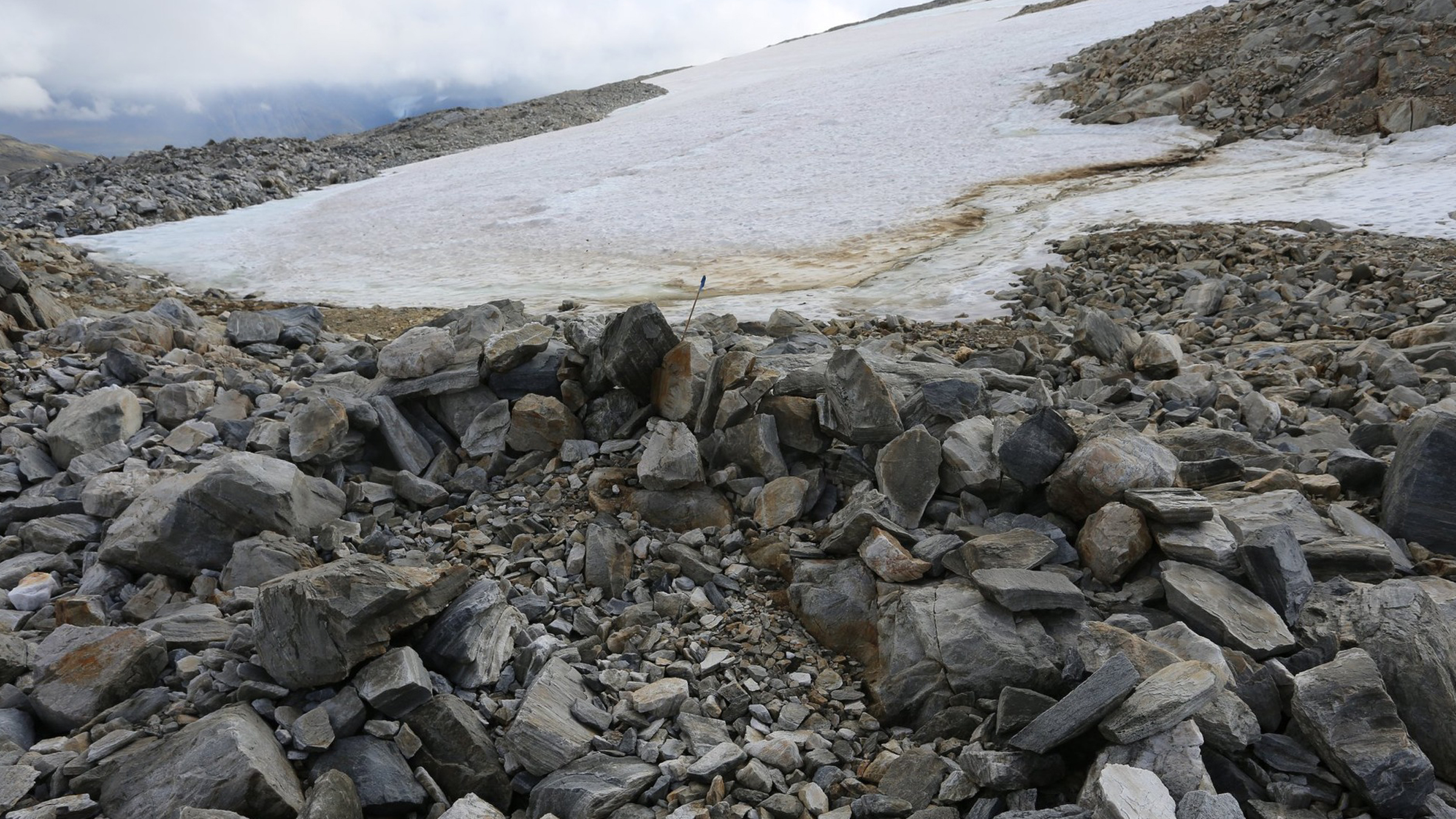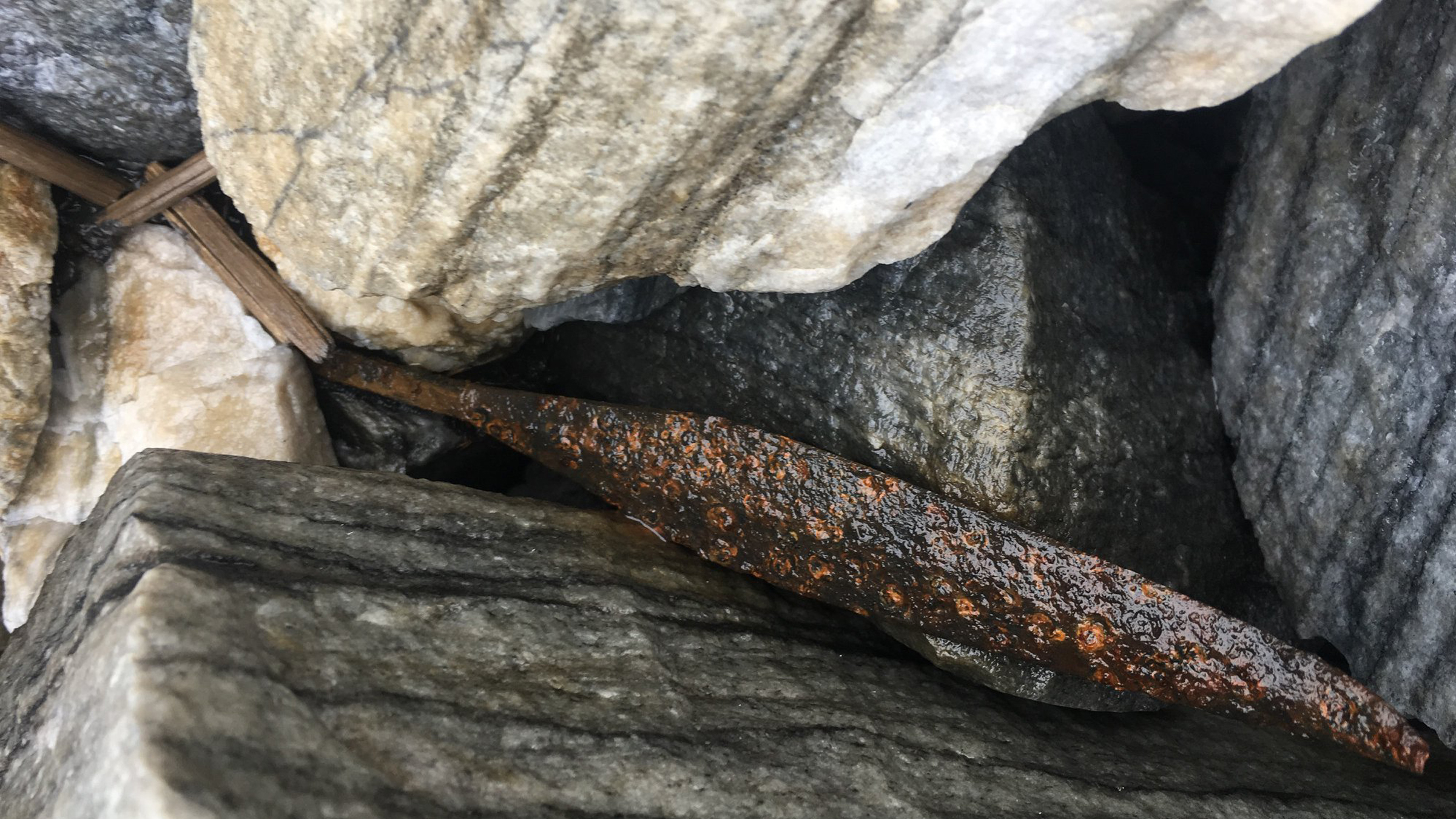Melting glaciers reveal 1,700-year-old weapons used by reindeer hunters
As well as 40 hunting blinds.

Glacial archaeologists in Norway have discovered weapons and secret hideaways on a remote mountain where stealthy hunters waited for reindeer more than a millennium ago.
While surveying part of the inland mountain peak Sandgrovskaret, the archaeological team recovered five arrows, three of which are up to 1,700 years old. The researchers also discovered 40 stone-built hunting blinds, which made the hunters "invisible" to nearby reindeer.
"When the reindeer had approached to within 10-20 meters [33 to 66 feet], the hunter would get up and start shooting arrows," said Lars Pilø, an archaeologist at the Department of Cultural Heritage, Innlandet County Council, Norway, co-director of the Glacier Archaeology Program and the editor of the Secrets of the Ice website.
For years, Pilø and his colleagues have trekked into the mountains to search for artifacts exposed by melting glaciers. They found this particular site in 2013, but they weren't able to return to do a large systematic survey there until 2018, when they found the weapons and hunting blinds. "There is a lot of melting going on due to climate change, and we had to prioritize other sites in the short time window for glacial archaeological fieldwork," he said.
Related: Photos: Ancient arrows from reindeer hunters found in Norway
Of the five arrows, three still have a preserved iron arrowhead. Based on an analysis of the arrowheads' shapes, these weapons likely date to between A.D. 300 and 600, Pilø said.
One of the three iron arrowheads is "a rare type not found at the ice before and hardly in graves in the lowlands, either," Pilø told Live Science in an email. When Secrets of the Ice announced the findings on social media in February, they received "quite a lot of comments that it had to be a spearhead, but the arrow shaft was found beside it, so it is an arrow," he noted.
Get the world’s most fascinating discoveries delivered straight to your inbox.
The other two arrows — those without iron arrowheads — likely date to the first millennium B.C., Pilø said.
The reindeer hunters who wielded the weapons likely hid in the nearby blinds. "The reindeer are very wary of movement, so the hunters had to make themselves invisible to get within shooting distance," Secrets of the Ice wrote in a Feb. 19 Facebook post.
The arrows couldn't have flown more than 66 feet (20 m), "so the hunters needed a good place to hide. And if there wasn't one, they built one themselves," Secrets of the Ice wrote.
The hunters didn't live on the 6,234-foot-tall (1,900 m) mountain. "Most likely they lived down in the valleys, but clearly had large hunting stations higher up in the mountains," Espen Finstad, a glacial archaeologist, told sciencenorway.no. During the Stone Age, people in this area lived in simple settlements. Later, during the Iron Age, they lived in "grand longhouses down in the valley," Finstad said. In 2021, glacial archaeologists announced the discovery of some of these longhouses, Live Science previously reported.
The team also found 77 pieces of reindeer antler and bone and 32 scaring sticks, which would have been placed in the ground like fence posts to guide spooked reindeer toward the ready archers, Pilø said. The scaring sticks date to between A.D. 200 and 1000, during the Iron Age, he added.
"Scaring sticks were used to lead the reindeer toward the hunting blinds, though exactly how this happened is still something that we are trying to understand," Pilø told Live Science.
Pilø and his colleagues plan to continue surveys in nearby mountains with melting ice. After all, time is running out; a new study finds that total glacier area in Norway has shrunk by 14% compared with the last time glaciers were measured from 1999 to 2006, according to a translated statement released in February by the Norwegian Water Resources and Energy Directorate (NVE).
Originally published on Live Science.

Laura is the managing editor at Live Science. She also runs the archaeology section and the Life's Little Mysteries series. Her work has appeared in The New York Times, Scholastic, Popular Science and Spectrum, a site on autism research. She has won multiple awards from the Society of Professional Journalists and the Washington Newspaper Publishers Association for her reporting at a weekly newspaper near Seattle. Laura holds a bachelor's degree in English literature and psychology from Washington University in St. Louis and a master's degree in science writing from NYU.
 Live Science Plus
Live Science Plus







